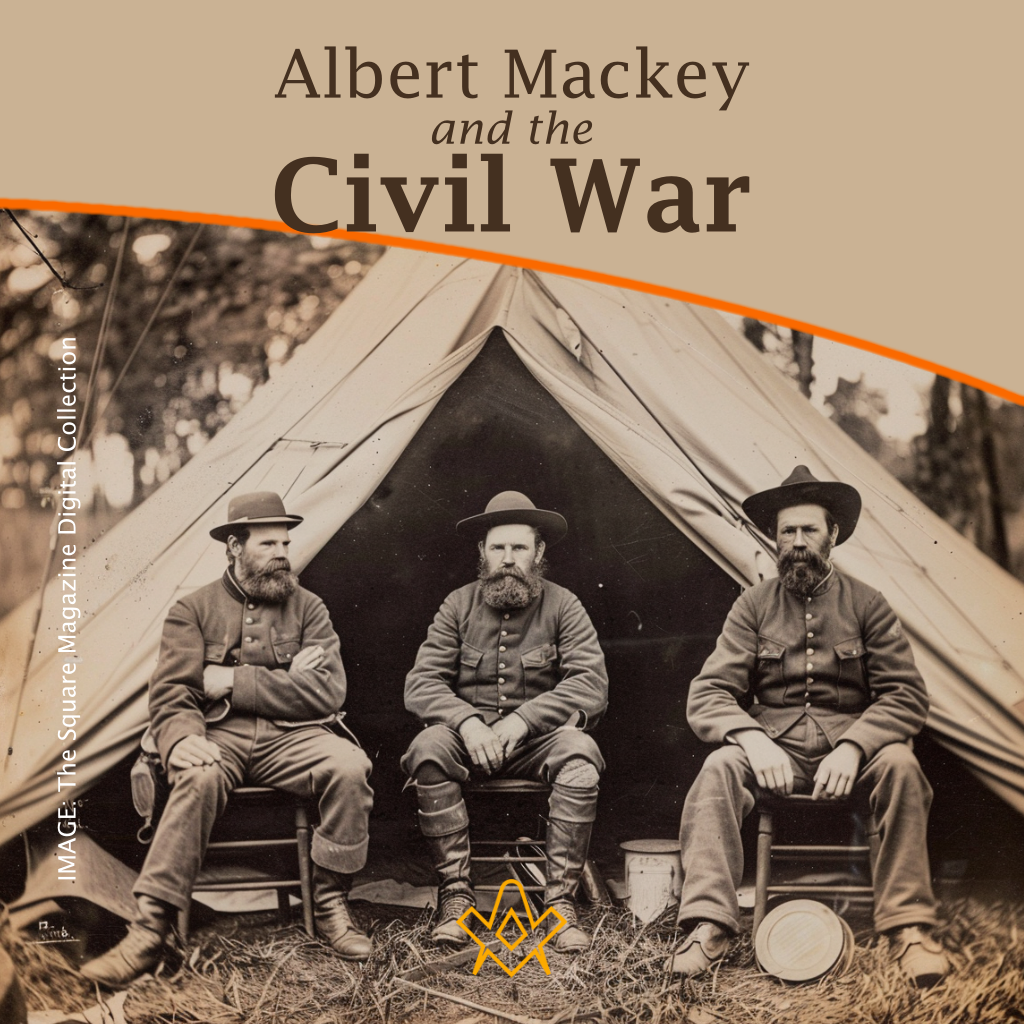In the midst of the Civil War’s darkness, Dr. Albert G. Mackey, a devoted Freemason, shone a light of brotherhood and peace. Despite the nation’s divide, Mackey tirelessly advocated for unity and compassion, embodying Freemasonry’s highest ideals—fraternal love and mutual aid. His actions remind us that even in dire times, humanity’s best qualities can prevail.
Dr. Albert G. Mackey was born on March 12, 1807, as the youngest son of Dr. John Mackey in South Carolina. In his early years, Mackey worked as a teacher before enrolling in the South Carolina Medical College in Charleston, where he graduated in 1832.
In Charleston, he built a profitable practice, taught anatomy at the local medical college, and served as the city physician. Following graduation, Mackey worked as an anatomy demonstrator at his alma university then practiced in Charleston.
When the Florida-Seminole War erupted, he volunteered and served in the Army. Albert Mackey later married Sarah Pamela Hubbell, the 18-year-old daughter of Sears Hubbell, a Connecticut-born sea captain who had moved in Charleston, on December 27, 1836.
When he returned to Charleston in 1839, Mackey became a member of the Medical Society and was appointed physician of the Alms House in 1840. In 1844, he stopped practicing medicine and published on a range of themes throughout the remainder of his life, although he specialized in the study of multiple languages, the Middle Ages, and Freemasonry.
He founded The Southern and Western Masonic Miscellany, a weekly magazine, in 1849 after being affiliated with many Charleston periodicals. He kept it going for three years, primarily on his own dime. From 1858 to 1860, he published a Quarterly devoted to the same topics.

IMAGE: The Square Magazine Digital Collection
During the turbulent times of the Civil War, Mackey was restricted to his hometown of Charleston, South Carolina, where he dedicated his time, energy, and wealth to the aid of his brethren, regardless of whether they belonged to the North or the South, in spite of the fact that he was a union man. [1]
Despite being in the South during the Civil War, New York freemasons were eager to invite Mackey back to their fraternity once South Carolina was recaptured by the North.
As Mackey recalled, the New York masons were, “moved by a common impulse of admiration for the man, of ardent sympathy for the unyielding patriot, of fraternal love for the zealous Mason, determined to invite him to visit them once more, and to receive at their hands a substantial evidence of their sympathy. [1]
As one mason recalled concerning Mackey,
“It transpired that Dr. Mackey had literally bankrupted himself in order to give assistance to his brethren, even to the extent of his personal belongings. A venerable brother who was present at the Academy of Music tells me that those who were in attendance left evident that Mason would take the lead in healing over the breach between the two section, and that in his own attitude and spirit Dr. Mackey revealed which so ennobled Abraham Lincoln ‘malice toward none, charity for all’” [1]
Mackey described his experiences during the Civil War in the Speech he gave to the New York Masons at a public “Welcome and Testimonial” held in the Academy of Music on Saturday evening, May 20, 1865.
A number of “distinguished artists,” along with “Grafulla’s Seventh Regiment Full Band,” made the occasion memorable. [1]
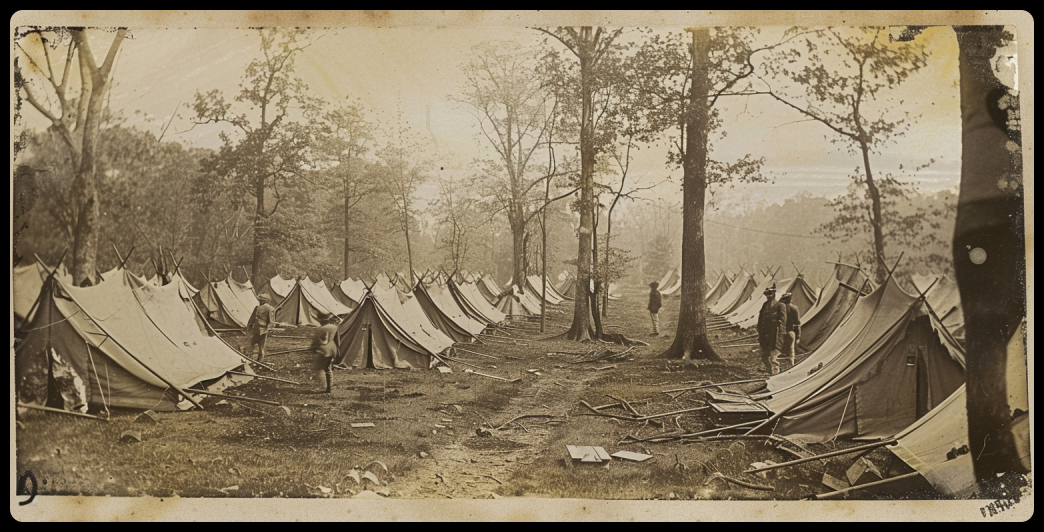
IMAGE: The Square Magazine Digital Collection
He began his speech as follows:
“As a mason, holding a not altogether obscure position in the Order, I have, in the course of my life written and said much about its excellence and beauty.
I know that it teaches fraternal love. I know that it inculcates kindness to the destitute, and sympathy for the sorrowing. I know its pretensions to be a science of morality and a development in one direction of the religious sentiment.
But until this war came upon us, in all its horror of want and suffering, of demoniac hate and inhuman passion, I did not know how successfully theory and practice could be mingled in the teachings of the Order and the actions of the disciples.
I did not know how surely and steadfastly its rays of light could dispel the gloom of this dark night of our national history.
When the first struggles of the infant rebellion began to threaten the gigantic future of ruin and desolation, which it subsequently too successfully achieved, all the other social, moral and religious societies of the country preserved a deathlike silence.
No voice of warning, no voice of entreaty, no prayer or suggestion for forbearance came from any section of the land, already upheaving with the throes of a fratricidal conflict.
The Church where peace on earth and good will toward men should have been at all times, but then more especially, the constant theme, was dumb as the grave.
The dark funeral pall of war was closing around the land, and there was none to raise its gathering clouds and let in one solitary ray of peace, or hope, or love.
Masonry alone, mindful of its divine mission on earth, spoke out with persuasive tongue of exhortation, that men and brethren should abstain from this cruel conflict.
That it thus spoke is a noble incident of its history. And although its voice was then unheeded, none shall henceforth, forever, rob it of the glory of the attempt.
Scarcely sixty days had elapsed after the first shot had been fired at Fort Sumpter, when, from the National Capitol, the true-hearted Grand Master of the Templars of the United States issued a memorable address to the knights of his command, who were scattered over both sections of our discordant country, in which he ‘implored each one, after humbly seeking strength and aid from on High, to exert all means at his command to avert the dread calamity and prevent the shedding of fraternal blood’.
Not a month had passed ere the officers of the Grand Lodge of Tenessee made a similar invocation for peace; and in the tones of entreaty that ought to have been heard, “as Masons, as members of a common brotherhood, as brethren bound together by fraternal ties not to be broken save by the hand of death,” they appealed for a cessation of the unnatural strife.
And a few weeks later, the Grand Masters of Kentucky, of Ohio, and of Indiana, united in a similar work of attempted reconciliation; and crying out from the very depths of their hearts, ‘Is there no balm for the bleeding wounds of our nation? Is there no hand to hold out the olive branch? No saviour to still the troubled waters?’
– they concluded their earnest appeal by inviting a Masonic convention, which should recommend some plan to heal the wounds of the country.
Had the acerbity of political strife, and the cunning of political corruption which were then overbearing the deluded people with their pressure, permitted the holding of such a convention, who can tell what blessed results might have been brought forth from the communion of men who had been taught the duty of mutual kindness and mutual forbearance at the same sacred altar and in the same mystic language?
And then came with like counsels the gentle voice of Cyril Pearl from his far-off home on the very borders of our land. He lived to see the culmination of the war which he deprecated.
Before its decline he was called from his earthly labours of love. Masonry can illy spare such noble-hearted men.
And when at last the clouds of war had not only gathered all over the land, but had burst forth in a storm of carnage; when there was no more hope of peace until the discordant passions of men should be diluted with the flow of blood, the Grand Master of South Carolina, whose heart, strongly beating with Union sympathies, has long since been quelled in death, addressed an encyclical letter to his brethren, in which he charged them in the name of our Supreme and Universal Master, ‘to suffer not the disputes and broils of men to impair the harmony which has existed and will exist throughout the fraternity’.
‘Let us not,’ he said, in his own emphatic language, “’let us not hear among us that there is war; that strife and dissension prevail.
As Masons, it concerns us not’. And I rejoice in my heart that these teachings were not unheeded. If there was war without, there was always peace within our lodges.
Will you bear with me while I say of my native jurisdiction, where I think I have some Masonic influence, that in South Carolina, reproached as I fear she justly is, as birthplace, the benignant principles of Freemasonry were never for a moment forgotten.
In its capital city, the only place, I fear, on the whole continent where the same deed of love was enacted, prisoners of war, who were Masons, were relieved on their parole by the officer of their guard, himself a Mason, and carried from the prison to the lodge room, to relieve the weariness of their captivity by witnessing and participating in the secret services of the Order.
And I can solemnly aver that I never approached a Mason or lodge in Charleston, with a petition for the relief of a destitute, suffering prisoner of war, without receiving the kindest response and the most liberal donation.
Throughout the length and breadth of our land, at the North and the South, the East, and the West, wherever there was the sin of strife, there, too, was the atoning peace of Masonry.
It went into the prison, and gave comfort to the captive. It went into the hospital, and gave balm to the wounded. It went into the battlefield, and gave rescue of life to the conquered.
Let none henceforth speak of its unknown mysteries, or contempt for its pretended merits. Let its adversaries be silent before the magnitude of its achievements; and when the history of this unnatural war is written, while all honour is bestowed upon the hero and the patriot, let it not be forgotten, but let it rather be inscribed in characters of living light, that when war was beginning to whet its beak – while other associations were indifferent and dumb – while the churches themselves gave no sign of Christian life, Masonry done sought to avert the impending evil; and when the full tide of conflict had rolled in upon our shores, and blood was soaked into the ground, Masonry again came forth, a ministering angel, to clothe in some measure the stain of our nation’s fratricidal contest with a ray of cheering light, and to give to the black cloud of war a silver lining”. [1]

IMAGE: The Square Magazine Digital Collection
Mackey’s writings speak of a complicated masonic history in which brothers were fighting against each other on one central issue: slavery. Many masonic lodges were in disarray from members who were pro- and anti-slavery.
However, this tension had been brewing since slavery was first brought to the North American continent. As a fraternal order based on freedom of religion and equality, masonic lodges were segregated by race.
The desire to avoid bloodshed and conflict within and outside the lodge was of great importance to Mackey and other masonic masons. However, the presence of slavery went against key masonic tenants of equality, brotherhood, and justice.
Although Mackey sought to avoid bloodshed, it did not address the underlying evil of slavery and racism. It was thus that masons during Mackey’s time faced the choice of either fighting in the Civil War to preserve or abolish slavery or seek to maintain the unsteady status quo between free and slave states to avoid armed conflict.
Interestingly, Mackey’s writings did not refer to Prince Hall Freemasons who certainly would’ve had a much different perspective on supporting the North during the Civil War.
But through Mackey’s writings, we can see valuable lessons in our current day on the preservation of human life and the sacred bonds of brotherhood that all masons enjoy.
Furthermore, we can remind ourselves that our equality, friendship, and brotherhood should always supersede race, ethnic, religious, or cultural backgrounds.
Being made in the image of God, all masons are equal and deserving of dignity and respect. Conflicts between brothers should be done amicably and without violence. Despite fundamental differences on a variety of issues, masonry teaches us to see the divine in the other.
To remember that our masonic brotherhood gives us an opportunity to reach and help those who we disagree with. It is not to say who is right or wrong. Rather, it is a bridge between people that masonry allows brothers to dialogue, discuss, and argue, even fervently, and still maintain friendships and bonds that can come to the right answer.
This aspect of masonry sets it apart from other institutions. It is truly something that makes it beautiful and remarkable. A true gem in the modern world.
References
1. Mackey A. Freemasonry in the Civil War. The Builder: A Journal for the Masonic Student 1922;8.
Biography: Jonathan Kopel is MM at Lubbock Lodge #1392 in Lubbock, Texas. He is currently in Washington DC for his neurology residency.
Article by: Jonathan Kopel

Bro. Jonathan Kopel is a master mason from Lubbock Lodge #1392 who resides in DC for his neurology residency.
.
Recent Articles: in people series
 Celebrate the extraordinary legacy of The Marquis de La Fayette with C.F. William Maurer's insightful exploration of Lafayette's 1824-25 tour of America. Discover how this revered leader and Freemason was honored by a young nation eager to showcase its growth and pay tribute to a hero of the American Revolution. |
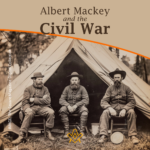 Albert Mackey and the Civil War In the midst of the Civil War's darkness, Dr. Albert G. Mackey, a devoted Freemason, shone a light of brotherhood and peace. Despite the nation's divide, Mackey tirelessly advocated for unity and compassion, embodying Freemasonry's highest ideals—fraternal love and mutual aid. His actions remind us that even in dire times, humanity's best qualities can prevail. |
 Discover the enduring bond of brotherhood at Lodge Dumfries Kilwinning No. 53, Scotland's oldest Masonic lodge with rich historical roots and cultural ties to poet Robert Burns. Experience rituals steeped in tradition, fostering unity and shared values, proving Freemasonry's timeless relevance in bridging cultural and global divides. Embrace the spirit of universal fraternity. |
 Discover the profound connections between John Ruskin's architectural philosophies and Freemasonry's symbolic principles. Delve into a world where craftsmanship, morality, and beauty intertwine, revealing timeless values that transcend individual ideas. Explore how these parallels enrich our understanding of cultural history, urging us to appreciate the deep impacts of architectural symbolism on society’s moral fabric. |
 Discover the incredible tale of the Taxil Hoax: a stunning testament to human gullibility. Unmasked by its mastermind, Leo Taxil, this elaborate scheme shook the world by fusing Freemasonry with diabolical plots, all crafted from lies. Dive into a story of deception that highlights our capacity for belief and the astonishing extents of our credulity. A reminder – question everything. |
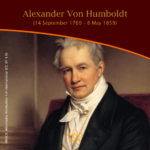 Dive into the extraordinary legacy of Alexander Von Humboldt, an intrepid explorer who defied boundaries to quench his insatiable thirst for knowledge. Embarking on a perilous five-year journey, Humboldt unveiled the Earth’s secrets, laying the foundation for modern conservationism. Discover his timeless impact on science and the spirit of exploration. |
 Voltaire - Freethinker and Freemason Discover the intriguing connection between the Enlightenment genius, Voltaire, and his association with Freemasonry in his final days. Unveil how his initiation into this secretive organization aligned with his lifelong pursuit of knowledge, civil liberties, and societal progress. Explore a captivating facet of Voltaire's remarkable legacy. |
 Robert Burns; But not as we know him A controversial subject but one that needs addressing. Robert Burns has not only been tarred with the presentism brush of being associated with slavery, but more scaldingly accused of being a rapist - a 'Weinstein sex pest' of his age. |
 Richard Parsons, 1st Earl of Rosse Discover the captivating story of Richard Parsons, 1st Earl of Rosse, the First Grand Master of Grand Lodge of Ireland, as we explore his rise to nobility, scandalous affiliations, and lasting legacy in 18th-century Irish history. Uncover the hidden secrets of this influential figure and delve into his intriguing associations and personal life. |
 James Gibbs St. Mary-Le-Strand Church Ricky Pound examines the mysterious carvings etched into the wall at St Mary-Le-Strand Church in the heart of London - are they just stonemasons' marks or a Freemason’s legacy? |
 Freemasonry and the Royal Family In the annals of British history, Freemasonry occupies a distinctive place. This centuries-old society, cloaked in symbolism and known for its masonic rituals, has intertwined with the British Royal Family in fascinating ways. The relationship between Freemasonry and the Royal Family is as complex as it is enduring, a melding of tradition, power, and mystery that continues to captivate the public imagination. |
 A Man Of High Ideals: Kenneth Wilson MA A biography of Kenneth Wilson, his life at Wellington College, and freemasonry in New Zealand by W. Bro Geoff Davies PGD and Rhys Davies |
 In 1786, intending to emigrate to Jamaica, Robert Burns wrote one of his finest poetical pieces – a poignant Farewell to Freemasonry that he wrote for his Brethren of St. James's Lodge, Tarbolton. |
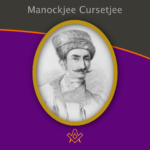 Alex Lishanin explores Mumbai and discovers the story of Lodge Rising Star of Western India and Manockjee Cursetjee – the first Indian to enter the Masonic Brotherhood of India. |
 Aleister Crowley - a very irregular Freemason Aleister Crowley, although made a Freemason in France, held a desire to be recognised as a 'regular' Freemason within the jurisdiction of UGLE – a goal that was never achieved. |
 Sir Joseph Banks – The botanical Freemason Banks was also the first Freemason to set foot in Australia, who was at the time, on a combined Royal Navy & Royal Society scientific expedition to the South Pacific Ocean on HMS Endeavour led by Captain James Cook. |
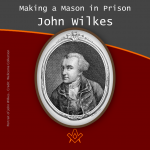 Making a Mason in Prison: the John Wilkes’ exception? |
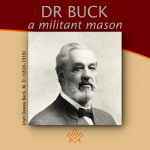 "To be a good man and true" is the first great lesson a man should learn, and over 40 years of being just that in example, Dr Buck won the right to lay down the precept. |
 Elias Ashmole: Masonic Hero or Scheming Chancer? The debate is on! Two eminent Masonic scholars go head to head: Yasha Beresiner proposes that Elias Ashmole was 'a Masonic hero', whereas Robert Lomas posits that Ashmole was a 'scheming chancer'. |
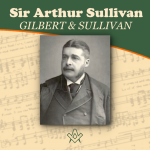 Sir Arthur Sullivan - A Masonic Composer We are all familiar with the comic operas of Gilbert and Sullivan, but did you know Sullivan was a Freemason, lets find out more…. |
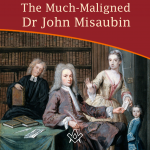 The Much-Maligned Dr John Misaubin The reputation of the Huguenot Freemason, has been buffeted by waves of criticism for the best part of three hundred years. |
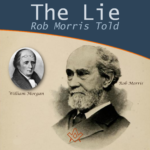 Was William Morgan really murdered by Masons in 1826? And what was the lie Masonic author Rob Morris told? Find out more in the intriguing story of 'The Morgan Affair'. |
 Lived Respected - Died Regretted Lived Respected - Died Regretted: a tribute to HRH The Prince Philip, Duke of Edinburgh |
 Who was Moses Jacob Ezekiel, a Freemason, American Civil War Soldier, renowned sculptor ? |
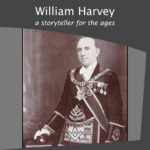 A Masonic author and Provincial Grand Master of Forfarshire in Scotland |
 Who was Philip, Duke of Wharton and was he Freemasonry’s Loose Cannon Ball ? |
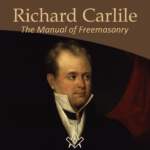 Richard Carlile - The Manual of Freemasonry Will the real author behind The Manual of Freemasonry please stand up! |
 Nicholas Hawksmoor – the ‘Devil’s Architect’ Nicholas Hawksmoor was one of the 18th century’s most prolific architects |
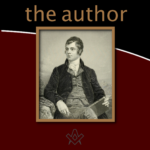 By Bro. Anthony Oneal Haye (1838-1877), Past Poet Laureate, Lodge Canongate Kilwinning No. 2, Edinburgh. |
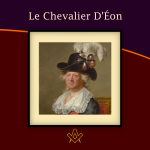 The Curious Case of the Chevalier d’Éon A cross-dressing author, diplomat, soldier and spy, the Le Chevalier D'Éon, a man who passed as a woman, became a legend in his own lifetime. |
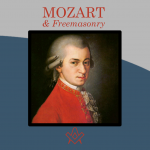 Mozart Freemasonry and The Magic Flute. Rev'd Dr Peter Mullen provides a historical view on the interesting topics |
masonic knowledge
to be a better citizen of the world
share the square with two brothers

click image to open email app on mobile device
